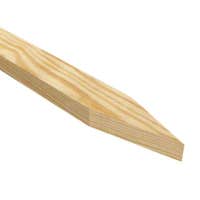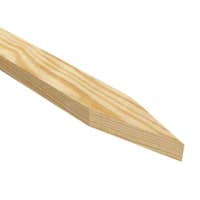Flagging Tape & Stakes
Both highly visible and weather resistant, flagging tape is one of the most widely used products in construction and many other industries. It's bright colors often have a universal code in each industry creating a "visual shorthand" that saves time, money, and lives. Here are 4 of the most essential ways to use flagging tape:
Surveying. Flagging tape is used by surveyors to designate boundaries of land intended for a specific purpose. Because these markers often remain in place for months and even years while a project is in development, it is important that the color of the tape remains bright through the duration of the job. This is one of the hallmarks of flagging tape - it's color won't fade over time regardless of sun, wind, rain or other weather conditions.
Forestry. Flagging tape is widely used in forestry to mark trees for various purposes. One color can indicate trees designated for logging and another to mark an unhealthy tree or one that may pose a potential hazard. Other colors are used to mark trails or other points of interest for visitors. Foresters can also use the tape to highlight animal habitats or alert people to hidden dangers.
Disasters. Emergency crews and first responders use flagging tape to relay information to crew members during a disaster. Red is used to indicate patients with serious injuries in need of immediate attention. Yellow denotes persons with serious, but non life-threatening conditions. Green conveys non-serious injuries that can wait for attention. And black is used to mark the deceased. The use of flagging tape for these types of emergency situations can truly save lives.
Mining. In mining and other industries where safety is a primary factor, flagging tape is extremely useful in almost every step of the operation. It can marking reference points as well as identify drill holes to name just a few.








